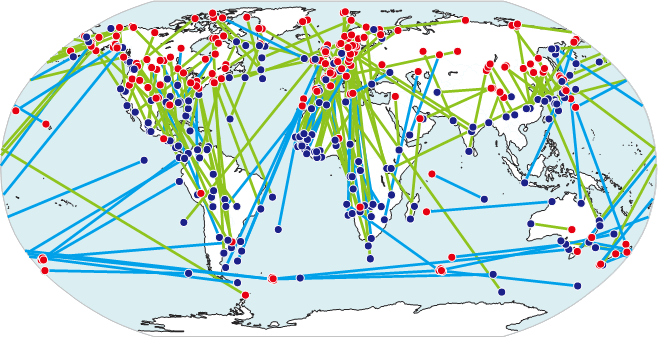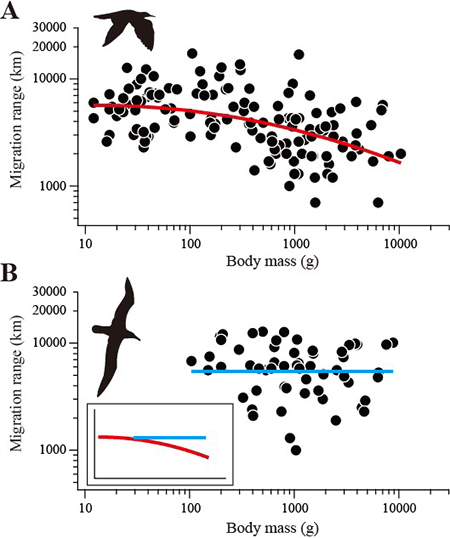National Institute of Polar Research
[Research Highlight] Migration ranges of flying birds depend on body size and flight style
Released on July 11, 2016 (in Japanese)
Posted on November 1, 2016
National Institute of Polar Research
The decades long tracking of flying birds reveals that body size and flight styles determine the scale of birds’ migration, as predicted by the aerodynamic theory of bird flight.
The decades long tracking of flying birds reveals that body size and flight styles determine the scale of birds’ migration, as predicted by the aerodynamic theory of bird flight. Dr. Yuuki Watanabe, associate professor at the National Institute of Polar Research, Japan, compiled the migratory tracks of 196 species of flying birds recorded by electronic tags during the last few decades. He demonstrated that the complex migration patterns could be explained by a simple energetic theory. Increased energy consumption of larger flapping birds, such as cranes, geese, and swans that migrate between Japan and Siberia or travel similar distances in other parts of the world, limits their migration to shorter distances. In contrast, migration ranges of soaring birds, illustrated by raptors, vultures, and albatrosses that migrate globally with minimal energy consumption, are larger than those of flapping birds and independent of body size.

Fig. 1.
World map showing the breeding areas (red circles) and the furthest positions occupied by birds during the non-breeding season (blue circles). The two areas are connected by light green lines (for flapping birds) or light blue lines (for soaring birds).

Fig. 2.
Migration range as a function of body mass for (A) flapping birds and (B) soaring birds.
Inset in (B) shows the comparison of the best-fit models between flapping and soaring birds.
Published Paper
Journal: Ecology Letters
Title: Flight mode affects allometry of migration range in birds
Author: Yuuki Y. Watanabe (National Institute of Polar Research, Japan)
URL: http://onlinelibrary.wiley.com/doi/10.1111/ele.12627/full
DOI: 10.1111/ele.12627
Published online: June 16, 2016
Contact
Public Relations Section, National Institute of Polar Research
E-mail: kofositu@nipr.ac.jp








